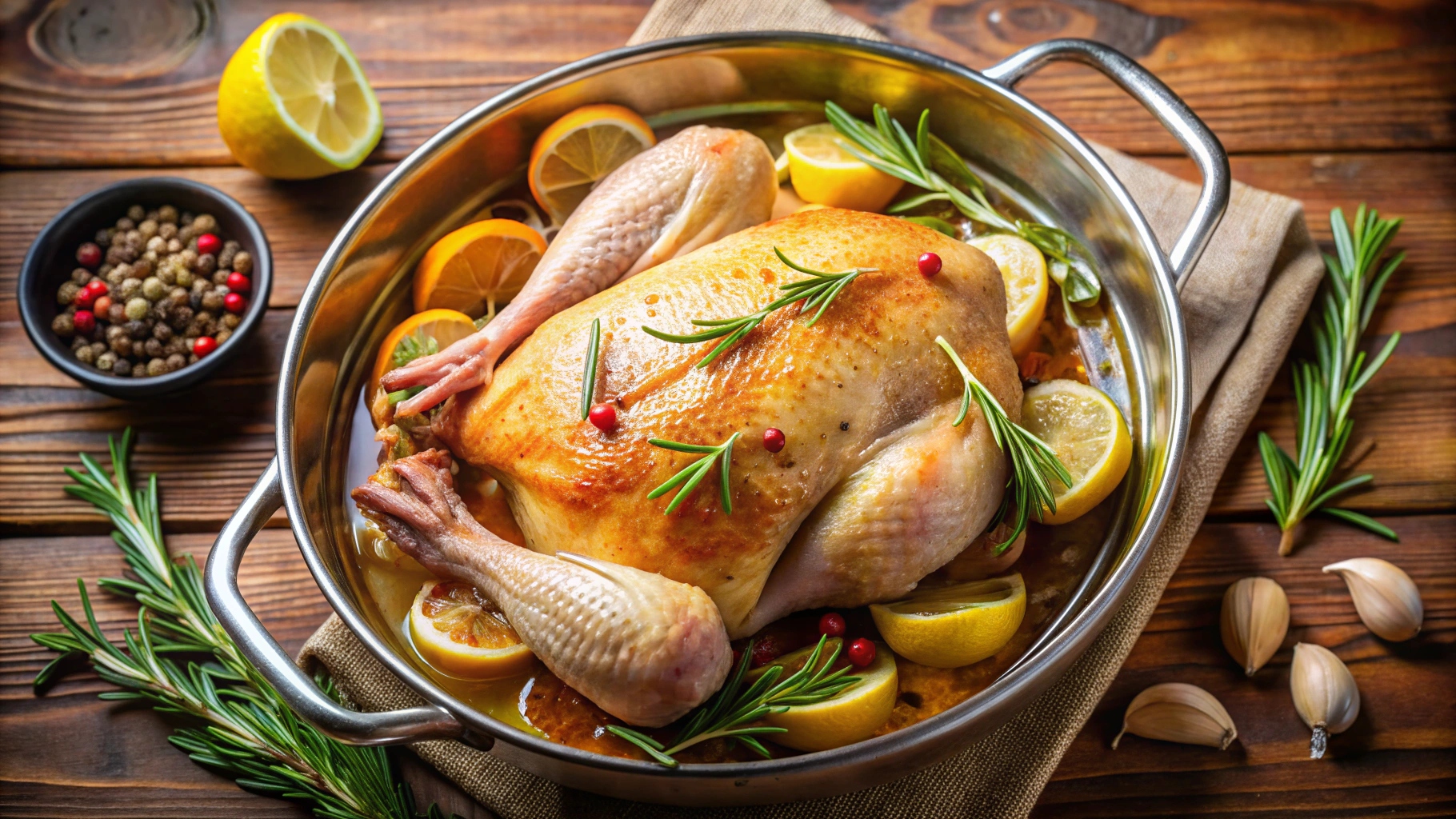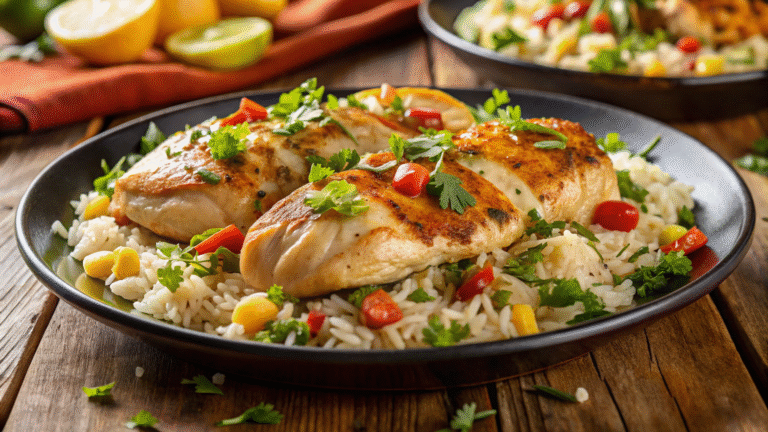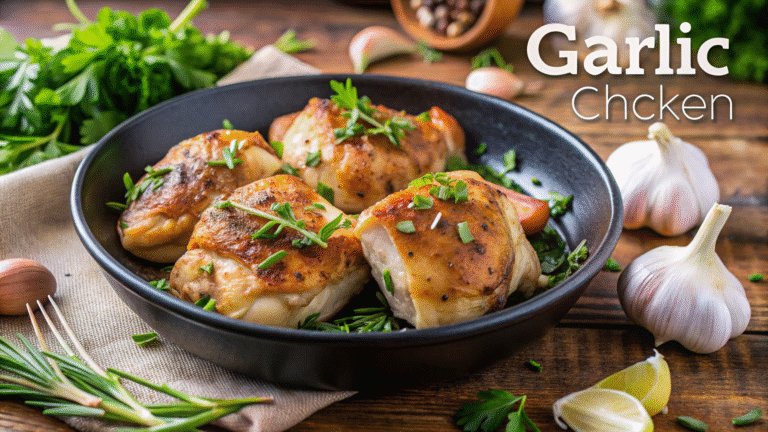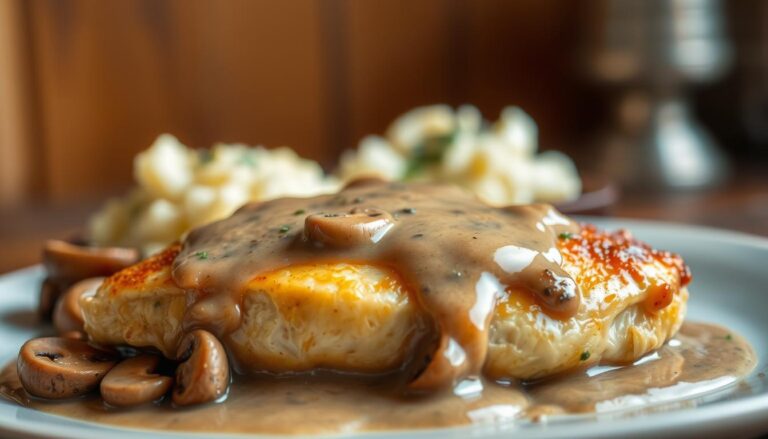Simple Chicken Brine Recipe

Every home cook has faced the problem of dry, tasteless chicken. I remember a family dinner where the chicken was so tough, it felt like shoe leather. That moment changed everything for me. Discovering the magic of a simple chicken brine changed my cooking forever.
Brining is more than a cooking technique—it’s a secret weapon for juicy, flavorful chicken. With an easy chicken brine recipe, you’ll make your meals amazing. Whether you’re a weekend griller or a passionate home chef, this simple technique will change how you cook chicken.
This guide will show you how to make the perfect simple chicken brine. It locks in moisture and adds incredible flavor. Get ready to impress your family and friends with chicken that’s tender, succulent, and full of taste.
Key Takeaways
- Brining guarantees juicier, more flavorful chicken
- Simple ingredients create incredible results
- Easy technique suitable for all cooking levels
- Transforms basic chicken into gourmet meals
- Works with multiple chicken cuts and cooking methods
What is Chicken Brine and Why Use It?
Chicken brining is a cooking method that turns regular chicken into a delicious treat. Making your own chicken brine is easy and boosts your cooking skills. It makes chicken juicy and full of flavor every time.
A quick chicken brine is a saltwater mix that does magic on meat. It works through a cool scientific process. When chicken is soaked in this mix, salt and water get into the meat’s cells. This creates a system that keeps moisture in.
Understanding the Basics of Brining
Brining uses a process called osmosis. Salt helps the chicken’s proteins soak up and hold water. A good brine has:
- Water
- Salt (main ingredient)
- Optional seasonings
Benefits of Brining Chicken
Brining has many benefits for those who want to make their chicken dishes better:
| Benefit | Description |
|---|---|
| Moisture Retention | Keeps chicken from drying out while cooking |
| Enhanced Flavor | Seasonings go deeper into the meat |
| Improved Texture | Makes chicken more tender and juicy |
Whether you’re new to cooking or have been doing it for years, learning to make a homemade chicken brine can greatly enhance your dishes. It’s easy and makes a big difference.
Key Ingredients for Simple Chicken Brine
To make the best chicken brine, you need to know the right ingredients. These ingredients turn a simple chicken into a dish that’s truly special. Start by picking the perfect mix of components to boost your chicken’s taste and texture.
A flavorful chicken brine is more than just salt and water. It’s about finding the right balance of ingredients. This balance creates a dish that’s both delicious and satisfying.
Essential Components for Brining
The base of a great chicken brine includes these key ingredients:
- Kosher Salt: This is the main ingredient that keeps meat moist
- Water: It’s the liquid base that dissolves and spreads the salt
- Sugar: It balances out the salt and helps with browning
Optional Flavor Enhancements
To make your brine even more flavorful, try adding these:
- Fresh herbs like rosemary, thyme, and sage
- Whole peppercorns
- Garlic cloves
- Citrus zest for a burst of freshness
- Bay leaves for a deeper flavor
Playing with these ingredients lets you create a chicken brine that’s all your own. It can match your taste and cooking style perfectly.
Step-by-Step Guide to Making Simple Chicken Brine
Making a traditional chicken brine is an art that turns regular chicken into a juicy, tasty dish. The basic chicken brine formula is easy and can boost your cooking skills with little effort.
Learning to make a perfect brine needs focus and knowing the basics of salt, water, and flavor.
Preparing the Brine Solution
To make your traditional chicken brine, you’ll need a few key ingredients:
- Kosher salt (primary seasoning)
- Cold water
- Brown sugar or white sugar
- Optional herbs and spices
Your basic chicken brine formula is simple:
- 4 cups water
- 1/4 cup kosher salt
- 2-3 tablespoons sugar
Cooling the Brine
After mixing your ingredients, cool the brine before adding chicken. Hot brine can start cooking the meat and compromise food safety. Put the mixture in the fridge for at least one hour. Make sure it cools to below 40°F before adding your chicken.
Pro tip: Adding ice cubes can help cool the brine faster and keep it at the right temperature for your traditional chicken brine.
How Long to Brine Chicken for Perfect Results
Brining chicken is an art that needs the right timing. The time you brine can turn a simple chicken into a juicy, flavorful dish.

The brining time varies based on the chicken’s cut and size. Smaller pieces like breasts need less time. Larger cuts, like whole chickens, need more time to soak up flavors and moisture.
Recommended Brining Times
Here are some guidelines for your chicken brine:
- Chicken breasts: 30-60 minutes
- Whole chicken: 8-12 hours
- Chicken thighs: 1-2 hours
- Chicken wings: 30-45 minutes
The strength of your chicken brine seasoning affects the flavor. Stronger seasonings might need shorter brining times to avoid overpowering the meat.
Over-Brining: What to Avoid
Brining too long can make chicken too salty and mushy. Always stick to the recommended times and keep it refrigerated.
“Timing is everything in chicken brining – too short, and you miss flavor; too long, and you risk ruining the texture.”
| Chicken Cut | Minimum Time | Maximum Time |
|---|---|---|
| Chicken Breasts | 30 minutes | 1 hour |
| Whole Chicken | 4 hours | 12 hours |
| Chicken Thighs | 1 hour | 2 hours |
Each chicken cut absorbs brine differently. Keep an eye on your meat and adjust your brining technique as needed.
Best Techniques for Brining Chicken
Learning to brine chicken can make your cooking stand out. A simple brine recipe needs the right techniques to keep meat moist and flavorful. Both professional chefs and home cooks use various methods to get juicy chicken every time.
- Wet Brining: Submerge chicken in a saltwater solution for maximum moisture retention
- Dry Brining: Rub salt directly on chicken skin to concentrate flavors
- Injection Brining: Use a specialized syringe to distribute brine internally
Different Brining Methods
Each brining method has its own benefits for chicken. Wet brining is great for big cuts, making the brine penetrate deeply. Dry brining is perfect for crispy skin and tender meat.
How to Submerge Chicken Properly
Properly submerging chicken is key for a good brine. Here’s how to do it:
- Choose a non-reactive container (like glass or food-grade plastic)
- Make sure chicken is fully covered in brine
- Keep it in the fridge during brining
- Pat dry before cooking for the best skin
Try out these methods to find your favorite way to brine chicken. You’ll make dishes that wow your family and friends.
Flavor Variations for Simple Chicken Brine
Creating a flavorful chicken brine opens up a world of culinary creativity. Your homemade chicken brine can turn an ordinary chicken dish into an extraordinary meal. This is thanks to the right mix of herbs, spices, and aromatics.

Try different flavor profiles to customize your chicken brine. This way, you can match your taste preferences and complement your favorite cooking styles.
Herb and Spice Combinations
Elevate your flavorful chicken brine with various herbs and spices. These combinations can add depth and complexity to your chicken:
- Mediterranean Blend: Rosemary, thyme, oregano, and lemon zest
- Cajun Kick: Paprika, cayenne, garlic powder, and black pepper
- Asian-Inspired: Ginger, star anise, green onions, and cilantro
Sweet vs. Savory Brines
Your homemade chicken brine can be sweet or savory, depending on what you want. Each approach gives a unique flavor experience:
| Brine Type | Key Ingredients | Flavor Profile |
|---|---|---|
| Sweet Brine | Honey, maple syrup, apple juice | Subtle sweetness, caramelized exterior |
| Savory Brine | Garlic, herbs, wine, soy sauce | Rich, complex, umami-forward taste |
Remember, balance is key when making your perfect chicken brine. Start with small experiments and adjust to your taste.
Tips for Using Brined Chicken
Once you’ve mastered the quick chicken brine, you’ll want to know how to cook it. The best chicken brine solution turns regular chicken into a dish to remember. But, it’s important to use it right to get the best taste.
Cooking Methods for Brined Chicken
Your brined chicken can be cooked in many ways. Each method brings out different flavors and textures:
- Roasting: Preheat your oven to 425°F for crispy skin and juicy interior
- Grilling: Use medium-high heat to create perfect char marks
- Pan-Frying: Quick cook for golden-brown exterior
- Baking: Ideal for casseroles and one-pan meals
“The secret to great chicken is in the brine and the cooking method” – Professional Chef
Storing Leftover Brine: Safety First
Food safety is crucial when dealing with your quick chicken brine. Used brine should never be reused or stored. Always throw it away after brining to avoid bacterial growth.
- Never reuse brine that has contacted raw chicken
- Dispose of brine in the sink with hot water
- Clean brining container thoroughly with hot, soapy water
- Store unused salt and spice mixture separately for future brines
Common Mistakes in Brining Chicken
Brining chicken can be tricky for home cooks. Knowing common mistakes helps you make perfectly seasoned chicken. Let’s look at the most common errors in brining.
Many home cooks struggle with the basic chicken brine formula. They fall into common traps that affect the dish’s quality. Misunderstandings about brining can lead to disappointing results if not careful.
Debunking Brining Myths
- Myth: Brining always makes chicken too salty
- Myth: Brining takes too much time for everyday cooking
- Myth: Any salt concentration works for brining
The truth is more complex. Your traditional chicken brine needs precision and understanding. Not all brines are created equal. The secret is in balancing salt, water, and timing.
Preventing Over-Salting Disasters
Over-salting is a major mistake in the basic chicken brine formula. To avoid it:
- Use precise salt measurements
- Calculate brining time based on chicken thickness
- Rinse chicken thoroughly after brining
- Adjust additional seasoning carefully
“The difference between a great and terrible brine is often just minutes of soaking time.” – Professional Chef
Your brining success depends on understanding these subtle nuances. With practice and attention to detail, your chicken will go from ordinary to extraordinary.
Conclusion: Perfecting Your Chicken Brining Technique
Learning to brine chicken can make your cooking stand out. It’s about mastering simple steps that boost flavor and texture. This way, you’ll make dishes that wow your loved ones.
Your chicken brine journey is just starting. You can try new herbs, spices, and liquids. Whether you like classic or bold flavors, brining opens up a world of taste.
Recap of Key Points
For great brining, use the right salt mix, brine for the right time, and choose quality ingredients. This helps your chicken soak up flavors better. Details like water temperature and ingredient amounts matter a lot.
Encouragement to Experiment
Now you know the basics, it’s time to get creative. Start with easy recipes and grow your skills. Every try makes you better at making tasty chicken that everyone will love.







